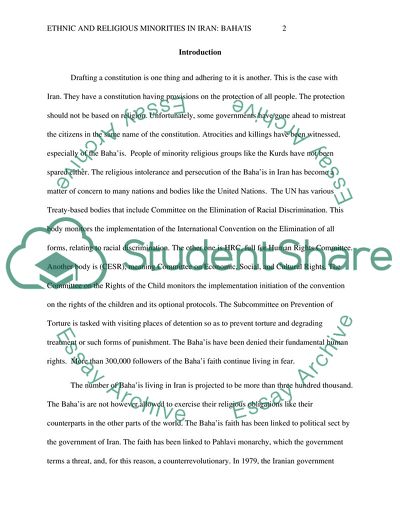Cite this document
(Ethnic and Religious Minorities in Iran: Baha'is Coursework Example | Topics and Well Written Essays - 4250 words, n.d.)
Ethnic and Religious Minorities in Iran: Baha'is Coursework Example | Topics and Well Written Essays - 4250 words. https://studentshare.org/social-science/1856826-ethnic-and-religious-minorities-in-iran-bahais
Ethnic and Religious Minorities in Iran: Baha'is Coursework Example | Topics and Well Written Essays - 4250 words. https://studentshare.org/social-science/1856826-ethnic-and-religious-minorities-in-iran-bahais
(Ethnic and Religious Minorities in Iran: Baha'Is Coursework Example | Topics and Well Written Essays - 4250 Words)
Ethnic and Religious Minorities in Iran: Baha'Is Coursework Example | Topics and Well Written Essays - 4250 Words. https://studentshare.org/social-science/1856826-ethnic-and-religious-minorities-in-iran-bahais.
Ethnic and Religious Minorities in Iran: Baha'Is Coursework Example | Topics and Well Written Essays - 4250 Words. https://studentshare.org/social-science/1856826-ethnic-and-religious-minorities-in-iran-bahais.
“Ethnic and Religious Minorities in Iran: Baha'Is Coursework Example | Topics and Well Written Essays - 4250 Words”. https://studentshare.org/social-science/1856826-ethnic-and-religious-minorities-in-iran-bahais.


